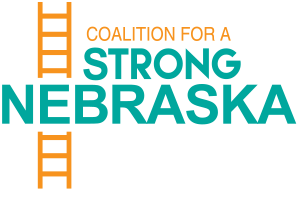From the Omaha World-Herald:
Backers put paid family leave for Nebraskans in the spotlight
By Barbara Soderlin World-Herald staff writer | Posted: Wednesday, October 22, 2014 1:00 am
Her daughter’s bout with meningitis was a health emergency that quickly became a financial emergency for Angie Gross of Omaha and her family.
Gross told an audience Tuesday that paid family leave time would have meant less stress and fewer difficult budget choices when she lost her job in 2012, just as her health care, travel and household expenses were rising because of her 6-year-old’s care and rehabilitation needs.
“We couldn’t afford for one of us to go on unpaid leave,” she said, but not being by her daughter’s side during her treatment “wasn’t an option.”
Gross, who today is back in her job as a commercial insurance specialist, joined a business owner and a licensed clinical social worker as panelists speaking about family leave issues.
The event was hosted by Voices for Children, Coalition for a Strong Nebraska, Nebraska AARP, Nebraska Appleseed and Holland Children’s Movement.
State Sen. Sue Crawford of Bellevue, the fourth panelist at the breakfast talk at the Salvation Army Kroc Center, is researching establishment of a state-run paid family leave time program, something three other states have created.
She said she plans to introduce a bill in the 2015 legislative session that would establish such a program in Nebraska. She said she hasn’t drafted the bill yet, but it would include elements found in programs in California, New Jersey and Rhode Island.
In California, for example, workers contribute to a state disability and family leave insurance pool. Workers can qualify for partial wage benefits for up to six weeks to take time off work to care for an ill or aging family member or to bond with a newborn or adopted child.
Employers are not required to provide the leave time and don’t contribute to the pool. The law also does not protect a worker’s job if he or she takes the leave time. But workers who qualify for job-protected, unpaid leave under the federal Family and Medical Leave Act can take the paid family leave benefit concurrently with that benefit to ensure job protection.
New Jersey’s program is similarly financed by worker payroll deductions of one-tenth of 1 percent of an employee’s first $31,500 in wages, or a maximum of $31.50 per year. Employers file quarterly reports stating an employee’s name, Social Security number, gross wages paid and the number of weeks worked.
Event speaker Ellen Bravo, executive director of the Wisconsin-based Family Values @ Work Consortium, said state efforts are needed to strengthen the 21-year-old federal leave act to both expand the benefits and provide them to more workers. The law covers only workers at firms with 50 or more employees.
Bravo noted that most other developed nations provide family and medical leave benefits far exceeding what’s available to most workers in the United States.
“This is a jobs and economy issue as well as a children and family issue,” she said. Workers who can’t afford to take unpaid leave are under greater stress at work, and it costs employers more if a company has to replace a worker who quits.
Unlike some other states, Nebraska does not have a state temporary disability program under which to create a family leave program. Another issue Crawford said she would have to consider: Some employers voluntarily provide paid time off for disability and family leave as an employee benefit, and supporters will have to study whether that coverage is at risk if a state program were available.
Gross’ employer terminated her job in 2012 so that Gross, who was not ready to return to work after her 12 weeks of leave under federal law, could qualify for COBRA and continue to provide health insurance for her family, though at a much higher cost. Her husband was not eligible for such leave because of the size of the business he works for, Gross said.
Their daughter, Mikayla, was hospitalized for three weeks for brain surgery and treatment, then was a patient for 15 more weeks of physical rehabilitation.
Today Mikayla is almost 9 years old and her health is “almost completely normal,” Gross said. “She runs and jumps and talks and eats and she’s on the basketball team.”
Gross is back to work and said her employer was supportive during the experience. But there was still a missing piece.
“Paid medical leave would make a huge difference to those families who are really trying to do the right thing,” she said.
